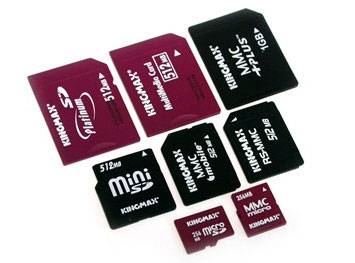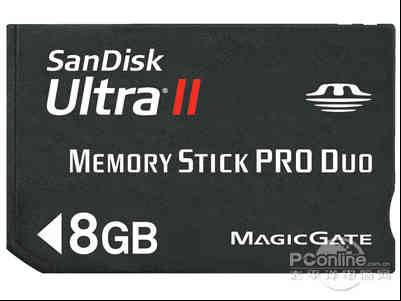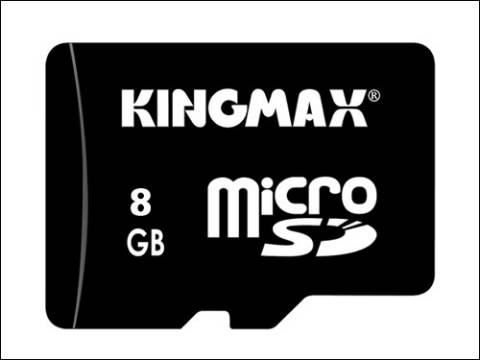Common storage media on the market include CF cards, SD cards, SM cards, Memory Sticks, xD cards, and small hard drives (MICRoDRIVE).
Image storage media are devices that store images in digital cameras, generally referred to as memory cards. The main types of memory cards used in digital cameras on the market include the following specifications:

SM Flash Card:
This is a Smart Media card, a type of storage medium. The SM card uses ssfdg/flash memory, characterized by being ultra-small, ultra-thin, and ultra-light. Its dimensions are 37 (length) x 45 (width) x 0.76 (thickness) mm, weighing 1.8g, with low power consumption and easy upgrades. The SM conversion card also has a PCMCIA interface, making data transfer convenient for users.
Advantages: Small size, lower price compared to CF cards, maximum capacity of up to 64MB, compatible with disk adapters, card readers, and PCMCIA. Faster speeds, with card readers and PCMCIA as the transfer devices.
Memory Stick:
Currently, this is a memory specification exclusive to Sony, usable only on Sony devices.

CF Flash Card:
This is a compact flash card that can be inserted into digital cameras like a PC card. It can use an adapter (also known as a conversion card) to fit standard PC card readers or other PC card devices.
CF storage cards have some structural components made of reinforced glass and metal casing. The CF storage card uses a standard ATA/IDE interface and comes with a dedicated PCMCIA adapter (conversion card), allowing users to easily transfer data between digital cameras and computers.
CF cards have the following disadvantages:
1. Limited capacity. Although capacity is increasing exponentially, it still cannot keep up with the pixel development of digital cameras. Currently, products with over 5 million pixels are the minimum specification for high-end products, while the mainstream consumer market has reached the 3 million pixel level. Under the ordinary JPEG compression format, capacity is acceptable, but professional-grade TIFF (RAW) format files cannot hold several images worth of data.
2. Larger size. Compared to other types of storage cards, CF cards are slightly larger, which limits the size of digital cameras that use CF cards. Therefore, most popular ultra-thin digital cameras have abandoned CF cards in favor of smaller SD cards.3. Performance limitations. The operating temperature for CF cards is generally 0-40 degrees Celsius. Thus, in environments below 0 degrees, digital cameras can essentially become “useless.” Even professional cameras are not immune. Although military-grade CF cards can withstand temperatures as low as -40 degrees Celsius, it remains unknown when they will become widespread or when prices will drop to levels affordable for the average consumer. Currently, the largest CF card capacity in the world has reached 640MB. Common market sizes include 8MB, 16MB, 32MB, 64MB, 128MB, and 256MB (128MB and above are Type II).

Memory Stick Duo:
The Memory Stick Duo is a micro memory stick, approximately one-third the size and weight of a standard memory stick, with a maximum storage capacity of 128MB.
Lexar Card:
The Lexar card is a type of digital camera storage medium produced by Lexar, similar in appearance to standard CF cards. It can be used in digital cameras, PDAs, MP3 players, and other digital devices that use CF cards, and can directly connect to computer systems via USB as a portable storage device.
Digital Roll:
The digital roll is a type of storage medium for digital cameras produced by Lexar, belonging to the same category of digital storage media as Hitachi’s SM card, Panasonic’s SD card, and Sony’s Memory Stick.

SD Card:
(Secure Digital Memory Card) is a next-generation memory device based on semiconductor flash memory. The SD card was co-developed by Panasonic, Toshiba, and SanDisk in August 1999. The size of an SD memory card is similar to that of a postage stamp, weighing only 2 grams, yet it offers high memory capacity, fast data transfer rates, great mobility, and excellent security. The SD card incorporates SanDisk’s flash memory control with MLC (Multilevel Cell) technology and Toshiba’s 0.16u and 0.13u NAND technology within a volume of 24mm×32mm×2.1mm, connecting via a 9-pin interface with a dedicated driver, without requiring additional power to maintain the memory information. Furthermore, it is a solid-state medium with no moving parts, eliminating concerns about mechanical damage.
Precautions for using SD cards:
(1) Avoid formatting SD cards with a card reader, as this may cause format errors, preventing photo storage and causing crashes.
(2) When transferring images with a card reader, use the copy operation rather than cut, and deletions should only be done using the camera’s own delete function to avoid storage card malfunctions.

(This article is sourced from the internet, intended for sharing, thank you to the original author)
